
On the splash page, Stan Lee compares his work to a movie.

He was always fascinated with films, and considered his comic book work inferior to the big screen. Man was he wrong. Thanks to his wife, he continued to work in comics–he was ready to give up after FF#1–and went on to prove they could be both commercially successful and a work of art.
This issue also introduced the idea of a villain’s true identity being a “mystery.” In this case, The Big Man. In future cases, Green Goblin and Hobgoblin, among others, would turn this idea into multi-issue arcs.

He starts by sending Fancy Dan out to trap Spider-Man.
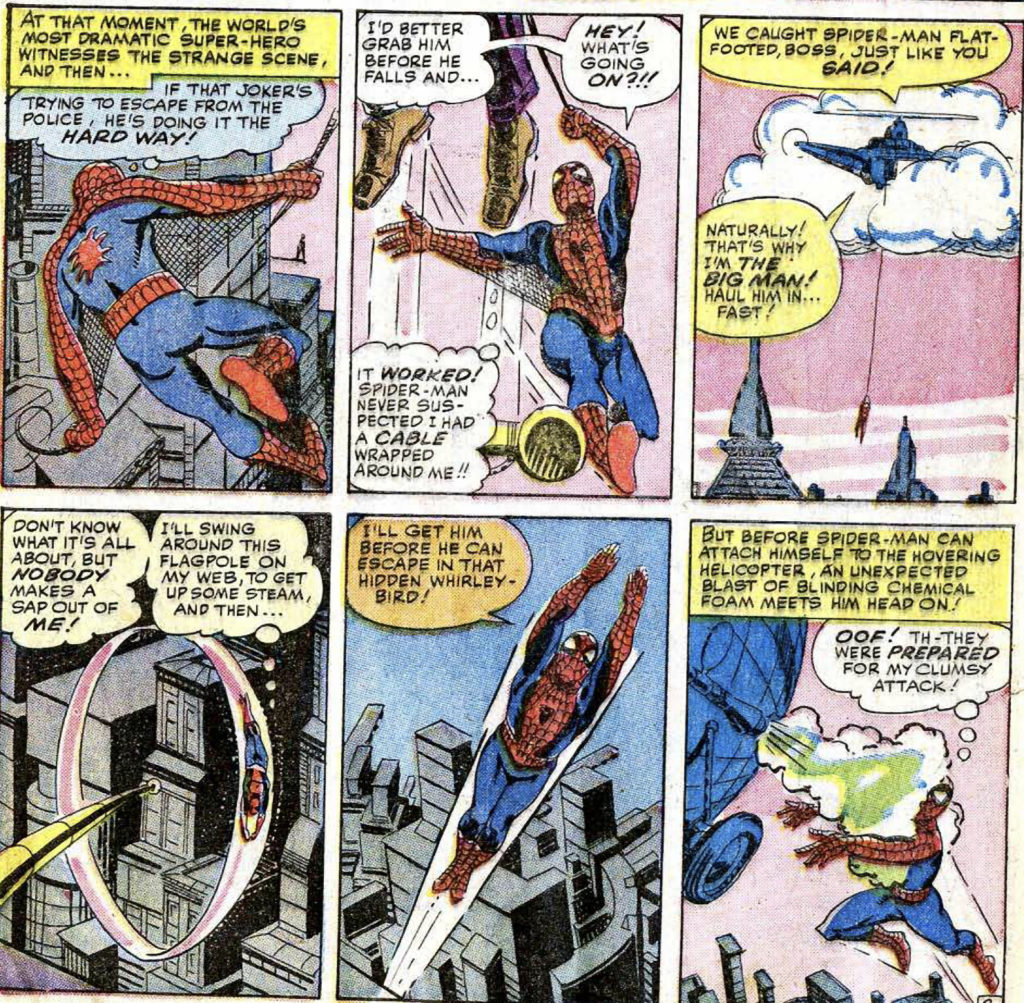
Why? To prove he’s the best criminal out there–and become the new head of “The Crime Syndicate.”

And he’s got a gang of criminal “enforcers” as muscle. On the one hand, it looks like they’re just a gymnast, a weightlifter, and a guy who is good with a lasso. But they must have powers because they hold their own against Spider-Man for a while. On the other hand, it’s implied that maybe Spider-Man is weak because he donated blood.

Earlier in this issue, Peter Parker had to give Aunt May a blood transfusion because she is ill–but he doesn’t want to reveal his mutated blood.
This makes him look like a coward, so he gives in, but Peter was right to be worried: The blood will cause her problems in issue #31.
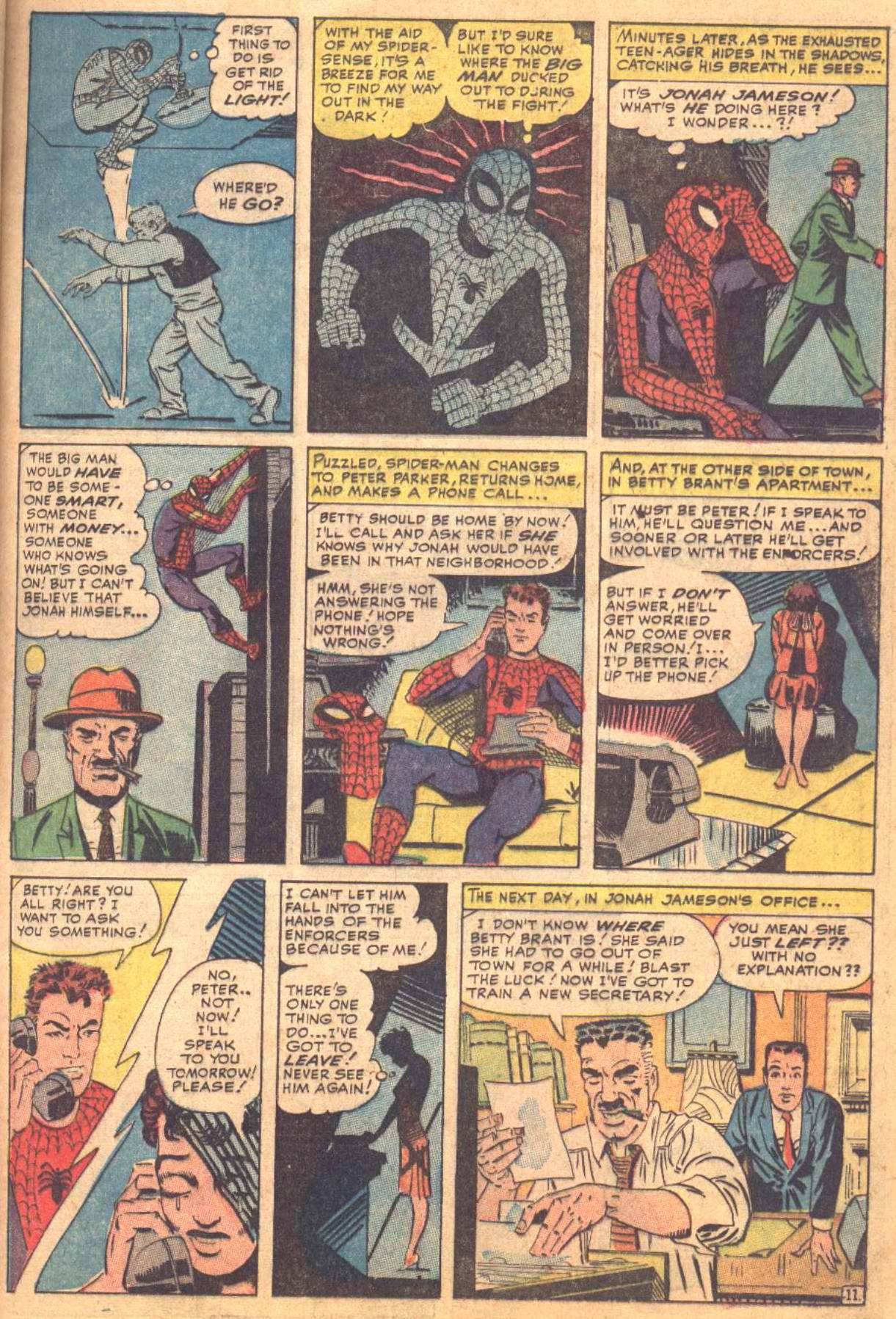
The criminals are finally foiled when Spider-Man pulls a trick on them, just like they did to him earlier in the issue.
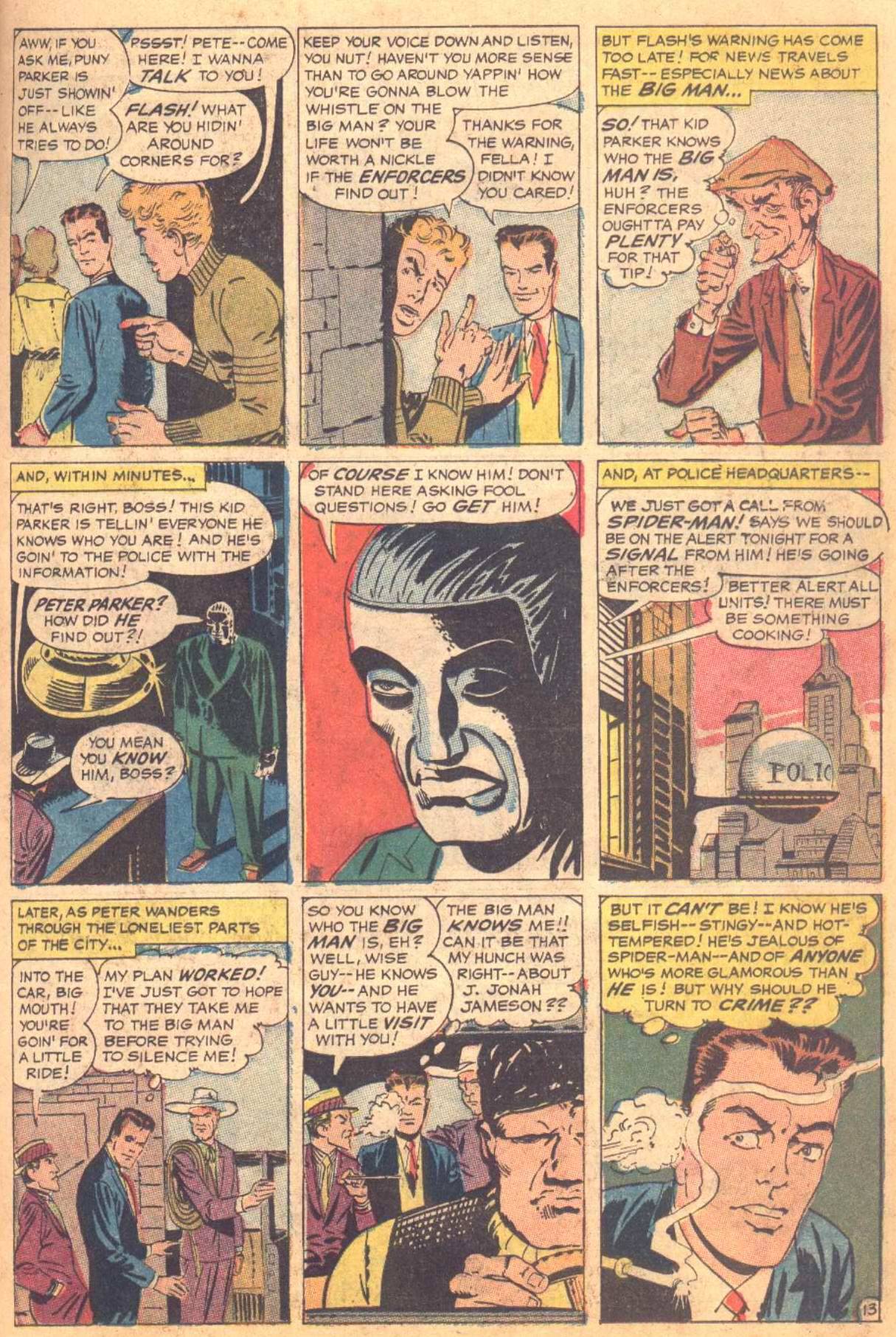
As Peter Parker, he claims to know who The Big Man really is, they go after him, he allows himself to be captured, and then he takes on The Enforcers and a whole bunch of other thugs.



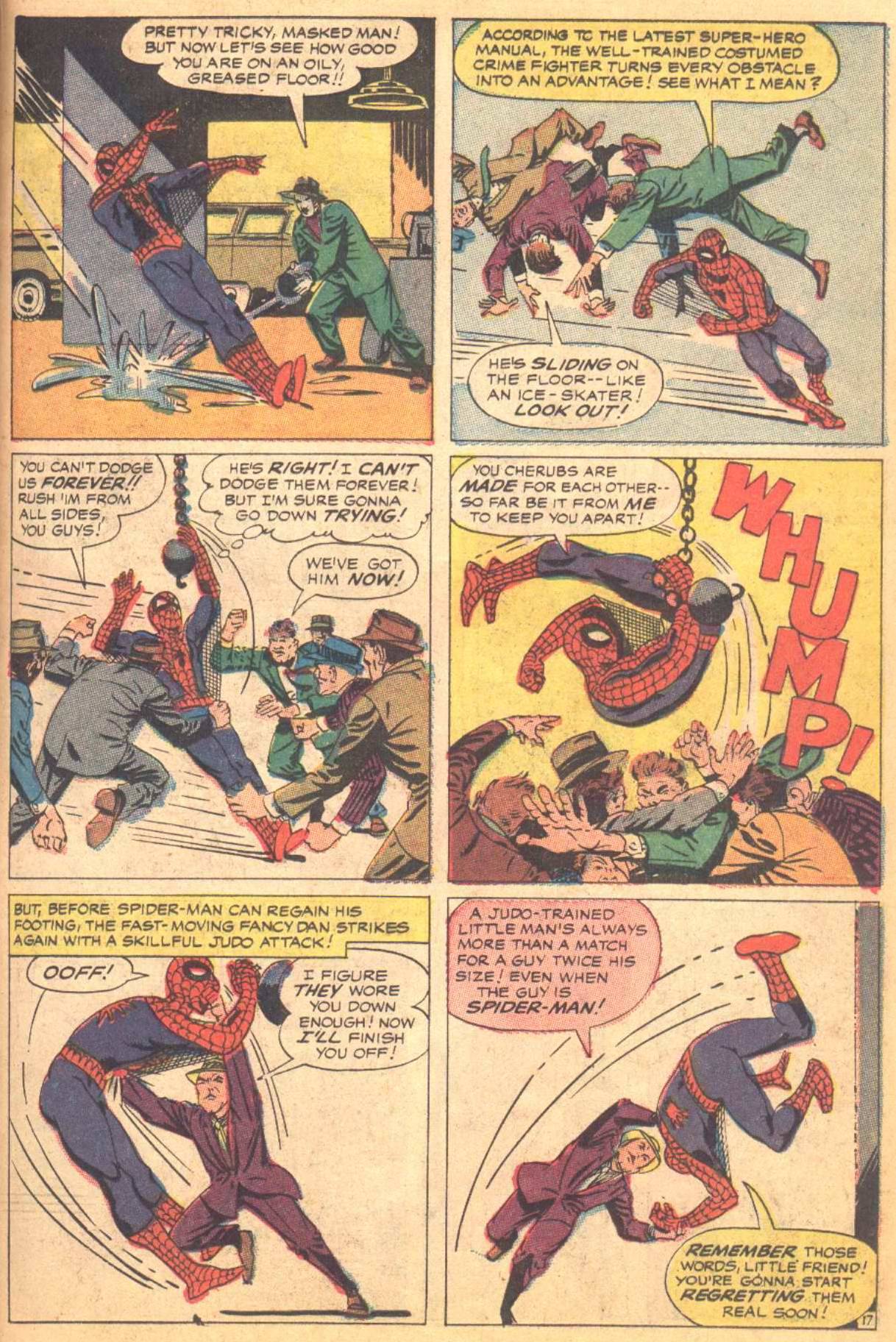
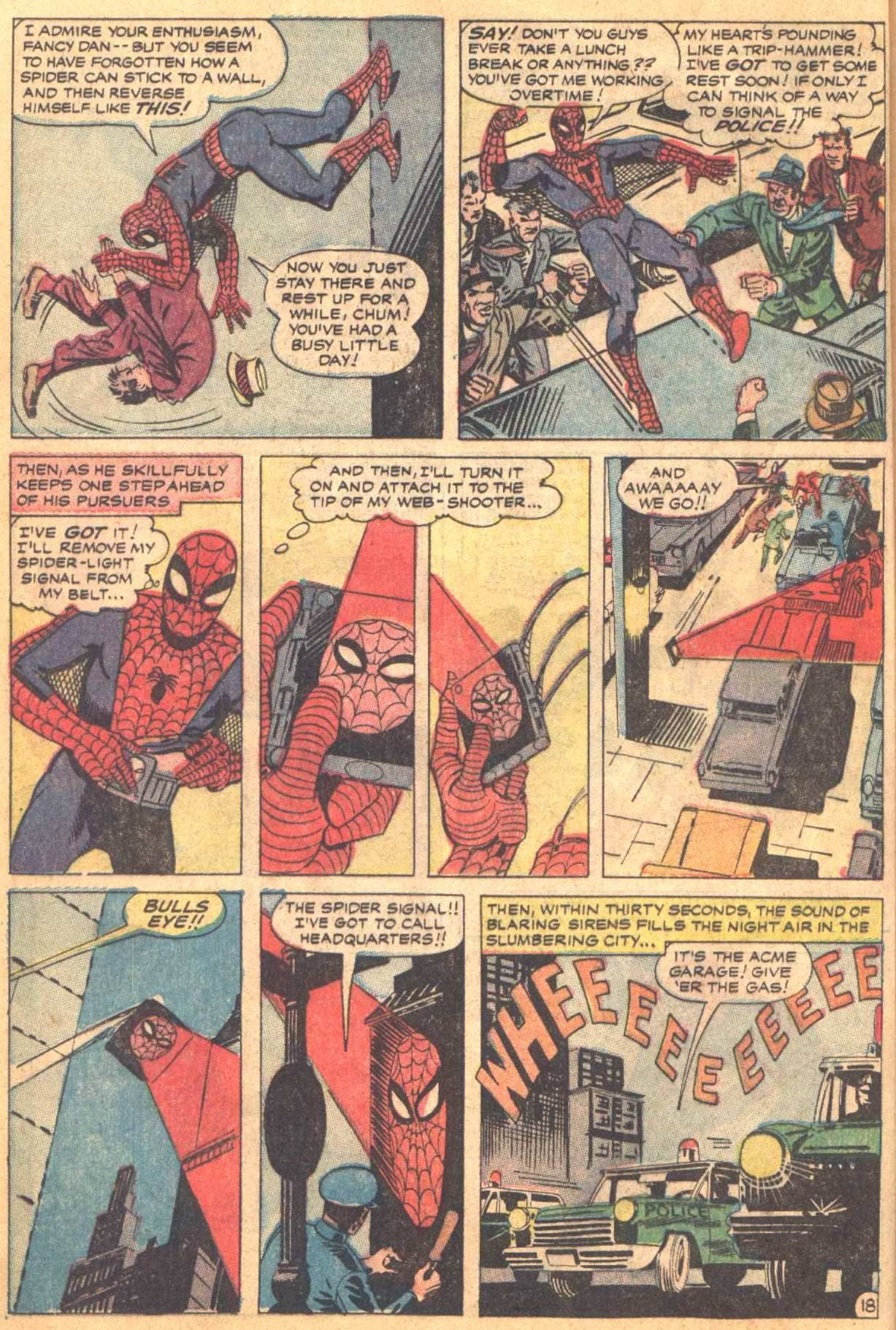

So maybe they don’t have powers?
Anyhow, Spider-Man ends up thinking the Big Man is J. Jonah Jameson, but the police actually figured out that it was Frederick Foswell.

He looks a lot like Harry Osborn, doesn’t he?

And on the cover there’s the tagline: “IN THIS ISSUE: Find out why J. Jonah Jameson really hates Spider-Man!”
Now you know. He’s jealous.

